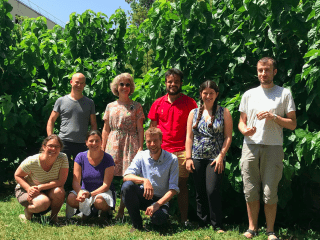Sex and Evolution Group
How and why sex evolved is a long-standing question in evolutionary biology, one of the hardest according to John Maynard Smith. In the past, this question has been mostly addressed by theoretical work. New approaches such as experimental evolution, next-generation sequencing and genomics, and phylogenetic methods to study character evolution are revolutionizing the field.
In our group, we are using some of these approaches to explore several lines of research:
- Evolution of sex chromosomes. Sex chromosome evolution is not well known due to the paucity of sequenced Y chromosomes. In order to fill this gap, we study both animal and plant sex chromosomes.
- Evolution of plant sexual systems. Plants have very diverse sexual systems. Their genetic basis, evolution and impact on lineage diversification are not well known. We focus on dioecy (species with male and female plants) and on hermaphroditic plants with self-incompatibility.
- Plant genomics and phenotypic evolution. We study plant genomes in various contexts, including the evolution of the angiosperm flower (Darwin’s abominable mystery) and plant domestication.
- Methodological developments. We develop new methods in bioinformatics, population genetics and phylogenetic comparative analysis in relation to points 1, 2 and 3.
Our lab is committed to developing well-being at work for all its members. Our lab is strongly involved in outreach and life sciences - humanities interdisciplinary activities.
More on our activities here: http://pbil.univ-lyon1.fr/members/marais/Lab_website-sept-2020/Home.html

